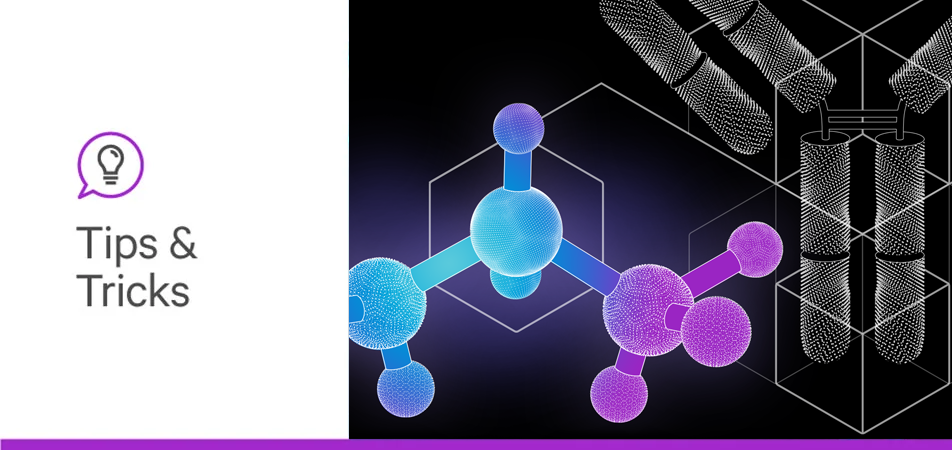

Lectins are a type of protein with the ability to bind to carbohydrates, aka glycans. Biologically, they play essential roles in processes such as cellular recognition, signaling pathways, and pathogen detection. In glycobiology, lectins are used to profile, characterize, and capture complex glycans in biological systems.
The first mention of lectins was in 1888 from a study of proteins with a unique ability to agglutinate red blood cells. They were isolated from the seeds of a castor tree, Riccinus communis (1). It is now known that they are not only produced in plants, but also come from a wide range of organisms.
All lectins share the ability to recognize and bind to carbohydrates, but the specific structure, carbohydrate specificity, and biological function vary. The source determines some of this variability. A strong understanding of where lectins come from will aid in generating a glycobiology assay and provide a deeper understanding of how they work.
Today we know of many natural sources that produce lectins, but plants were the first ones discovered.
Studying plant-derived lectins revealed their specificity towards sugars. For example, during an agglutination study of concanavalin A (Con A), sucrose inhibited the agglutination activity, demonstrating the sugar specificity of a lectin for the first time (2).
Plant lectins contribute to the plant’s development and interactions in the ecosystem. For example, plants utilize protein-glycan interactions to establish symbiosis with certain bacteria while recognizing and protecting against plant pathogens or predators (3).
Plant lectins are the most thoroughly investigated due to their abundance and ability to be isolated. Most lectin-related research is geared toward those from plants, with over 500 types isolated (4). Here at Vector Laboratories, we have an extensive plant lectin portfolio with some of the most used in the glycobiology field.
By the early 1970s, animal-derived lectins were only well-studied and purified from eels, snails, and horseshoe crabs. A few years later, an investigation of the mechanisms controlling glycoproteins in blood circulation led to the isolation of the first mammalian lectin (1). Since then, lectins have been shown to occur naturally across a wide range of animal species.
Among vertebrates, it has been shown that most lectins are well-conserved through evolution, indicating their importance in cellular processes.
At the human level, lectins are expressed throughout the body in tissues, including adipose tissue, brain, lymphoid tissue, endocrine tissue, and more (5). Some of the most widely expressed human lectins fall into a class called galectins.
Galectins play important roles in development, immune system activity, and microbial recognition by the immune system. Galectins are highly conserved in structure, especially in their carbohydrate-recognizing domain (6).
Another common type in humans is siglecs, which are particularly important for cell-to-cell interactions and immune responses to pathogens.
The ability of lectins to bind to carbohydrates makes them a useful tool for targeted drug delivery. Certain diseases, like cancer, have a specific glycan expression. Recognition of these glycans exemplifies how lectins could be a way to direct drug therapy to the disease’s location.
Like other domains, fungal lectins are involved in cellar processes involving molecular recognition. Specifically, they are involved in fungal growth, development, and morphogenesis.
Some fungal lectins have a unique involvement in a symbiotic relationship with plants and a defense system by presenting toxic activities (6).
Fungal lectins are mainly found in mushrooms, and to a smaller extent, yeast, microfungi, and mycelia. Those from mushrooms are specifically studied for their biomedical potential, such as mitogenic, antiproliferative, antitumor, antiviral, and immune-stimulating properties (8).
Even though few fungal lectins have been structurally defined, they still hold immense potential in biomedical research. Many of these show high specificity towards epitopes on human glycoconjugates, specifically in pathological states, and therefore are useful markers in study, diagnosis, and treatment (7).
Bacterial lectins are most present in elongated polymer systems called fimbriae or pili. These subunits resemble protein appendages which are necessary in the interaction with glycoproteins or glycolipids. This is crucial for the function of recognizing and invading host cells (9).
A highly-characterized bacterial lectin is the mannose-specific one of Escherichia coli (E. coli). These surface lectins initiate infection by adhering the bacteria to epithelial cells (10).
This powerful glycan recognition is not only used for pathogenic purposes but is essential for life. Bacterial lectins play a critical role in these symbiotic relationships in a comparable manner of identifying surface markers (9).
Algal lectins have been isolated and characterized at a much lower rate than plant ones. Currently, about 800 species of algae have been analyzed for lectins. This is low considering there are thousands of species of algae. Of those analyzed, about 60% show agglutination properties (11).
In comparison to plants, algal lectins have lower molecular masses. They typically have no affinity for monosaccharides and show high specificity for complex glycoproteins or oligosaccharides (12).
While algal lectins are used less frequently in biological research, there are some publications highlighting their use, especially because of their lower molecular weight and a smaller antigenic effect. For example, Eucheuma serra agglutinin (ESA) is derived from a marine red alga and induces cellular death across many cancer lines via apoptosis (13).
Sourcing lectins from natural sources, like the examples above, all have similar processes. In general, the portion of the organism with a high concentration of the lectin needs to be collected. For example, PHA-L is taken from whole kidney beans, AAL comes from the entirety of the orange peel fungi, and WFA comes from the seeds and pods of the W. floribunda tree.
From there, the process usually involves physical homogenization followed by a variety of purification steps to isolate the target protein. Examples of purification steps include size exclusion chromatography and affinity chromatography.
Whether lectin sources are novel or well-defined, their function and utility hold promise in the biomedical and life science fields.
To learn more about the use of lectin glycobiology applications, see our blog post How to Use Lectins in Glycobiology Workflows and the Lectin Application and Resource Guide. Be sure to stay tuned to the SpeakEasy Science Blog for more tips and tricks.





Stay in the Loop. Join Our Online Community
Products
Ordering
About Us
Application
Resources

©Vector Laboratories, Inc. 2025 All Rights Reserved.
To provide the best experiences, we use technologies like cookies to store and/or access device information. Consenting to these technologies will allow us to process data such as browsing behavior or unique IDs on this site. Not consenting or withdrawing consent, may adversely affect certain features and functions. Privacy Statement